IMPRESSIONS: Lacina Coulibaly | Compagnie Artistique Hakili Sigi in “Until the Lion Tells the Story…” at New York Live Arts
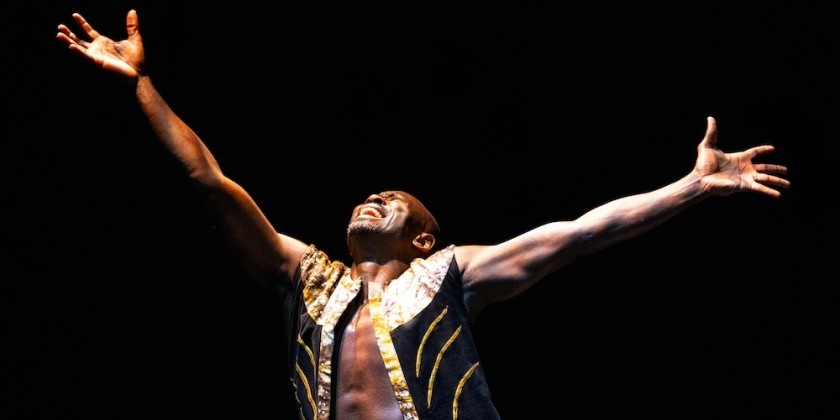
Choreographed, Directed, and Performed by Lacina Coulibaly
Music by Rhythm Rose (Doudou N’Diaye Rose), Mountain Love Dance (Jack de Johnette & Foday Musa)
Sound Composition by Kimathi Moore (Vibrations Rituelles & Magie Ethnique sounds will be used and modified)
Lighting Design by Roderick Murray
Costume Design by Oumar Ouedraogo
Set Design by Sylvestre Akakpo and Lacina Coulibaly
Stage Manager: Madison Ellis
Creative Strategy and Producing Consultant: Marýa Wethers
History, culture, and identity are entangled concepts that together express a three-dimensional sense of heritage across time, space, and personhood. The body grounds this unified understanding of sociohistorical identity, which makes dance an ideal vehicle for expressing these fundamental interrelationships. With its subtle expressive grammars and visceral bodily resonance, dance channels intrinsic, learned, and inherited knowledges into a holistic knowing that transcends language. With “Until the Lion Tells the Story…” choreographer and performer Lacina Coulibaly approaches this transcendence in a solo work of astonishingly articulate abstraction: his “Manifesto for Africa” told in seven scenes.

Coulibaly, originally from the West African nation of Burkina Faso, has firm faith in Africa’s abiding power as a continent of cultures united across difference. His story traces a common historical arc across Africa: from the sacred numerology of ancient ancestors, through the violence of colonialism, and toward a resilient, generative future. The vocabularies he employs are vast yet never overly verbose, with deep roots in traditional African dance idioms that merge dynamically with contemporary dance influences. These expressions reflect the name and purpose of Coulibaly’s company, Hakili Sigi, which represents the power of anchoring in tradition and self to build authentic, unconstrained futures. Within this ethos, Coulibaly emphasizes iterative processes of growth and resilience through changes and challenges. This strong philosophical foundation infuses his movement with clear expressive purpose and allows for a virtuosic paring down that reveals volumes in turn.
Brief scenic statements, outlined in the performance program and projected within the performance space, guide the experience of witnessing the narrative as it unfolds. Roderick Murray’s sensitive lighting conjures distinct environments through subtle shifts of tone and texture that invoke and delineate each scene’s purpose and setting. Several dozen clear plastic water bottles line the stage perimeter, gathered first in small clusters and later activated into shifting geometric arrays. Music, rhythms, and the sounds of life commingle in Kimathi Moore’s masterfully organic sound design to complete a performance picture that foregrounds the unity of movement, light, scene, and sound.
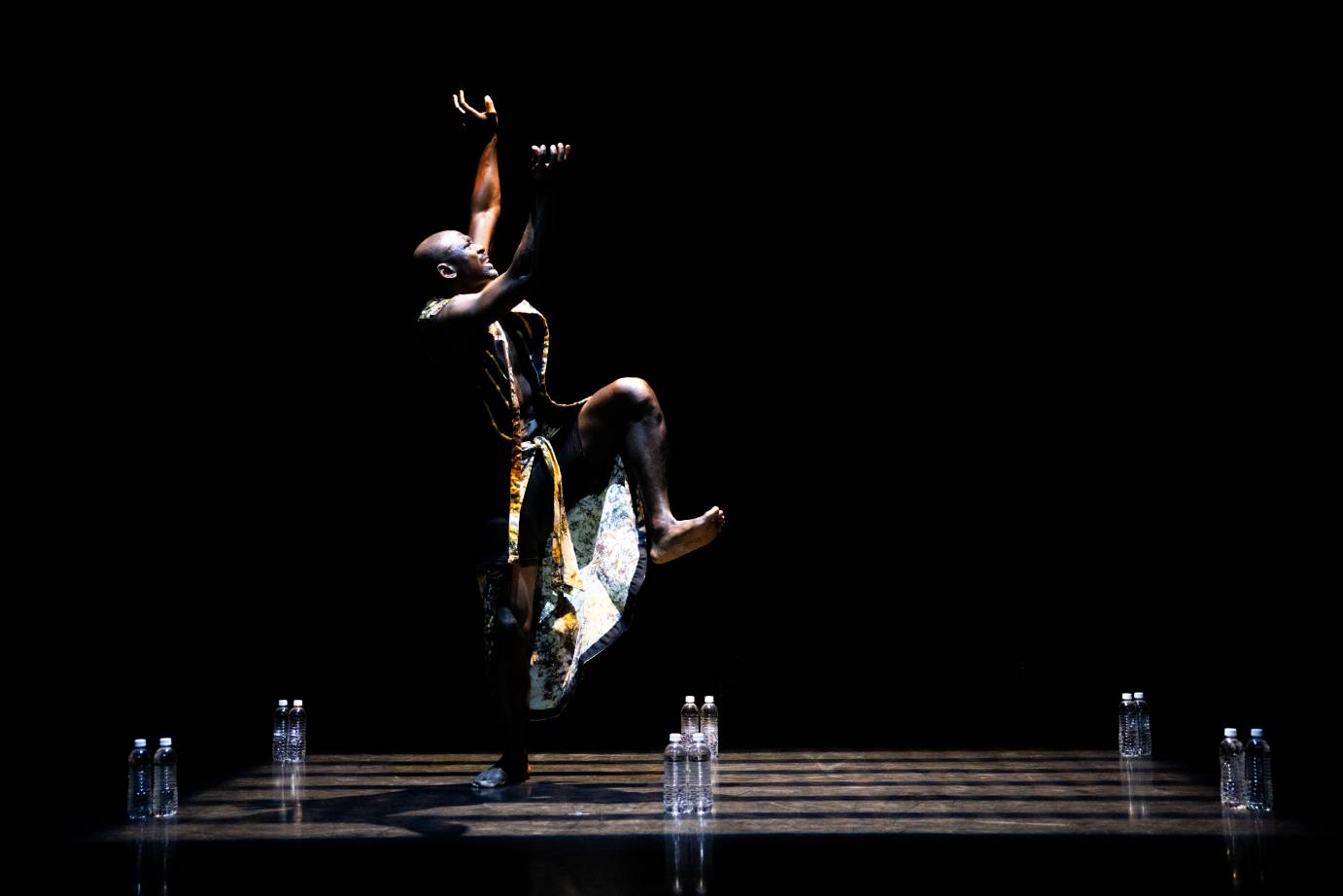
The opening scene invokes ritual to ground and guide the journey with unhurried movements and dynamic stillnesses that stretch time and calibrate a finely-tuned viewership. Coulibaly appears from an upstage corner, his spine curved over his legs as he paces slowly across, fingers barely trailing along the ground. As he walks he rises almost imperceptibly to his full height, his body called through a morphing, viscous sway and gestures of cleansing and anointing. He speaks through his eloquent feet to establish a motif of stepping patterns that are at once too intricate to predict and too simple to meander. The ritual is an incantation through movement, full of contemplative repetition and intentional ease.
This ritual evolves into the world through subsequent scenes: an invocation of ancestral spirits to guide a self-determined future, face challenges of persecution and confinement, and awaken resilience in the individual and the collective. Stepping patterns continue to drive his claim to space, though each scene brings variations in tone, pace, and purpose. As the vigilant Warrior King he draws on ancestral heritage through powerful stances and an unflinching gaze that never loses its frontal focus amid shifting orientations. Chants float in over drums through driving crescendos that infuse him with the will to persist even through silence.
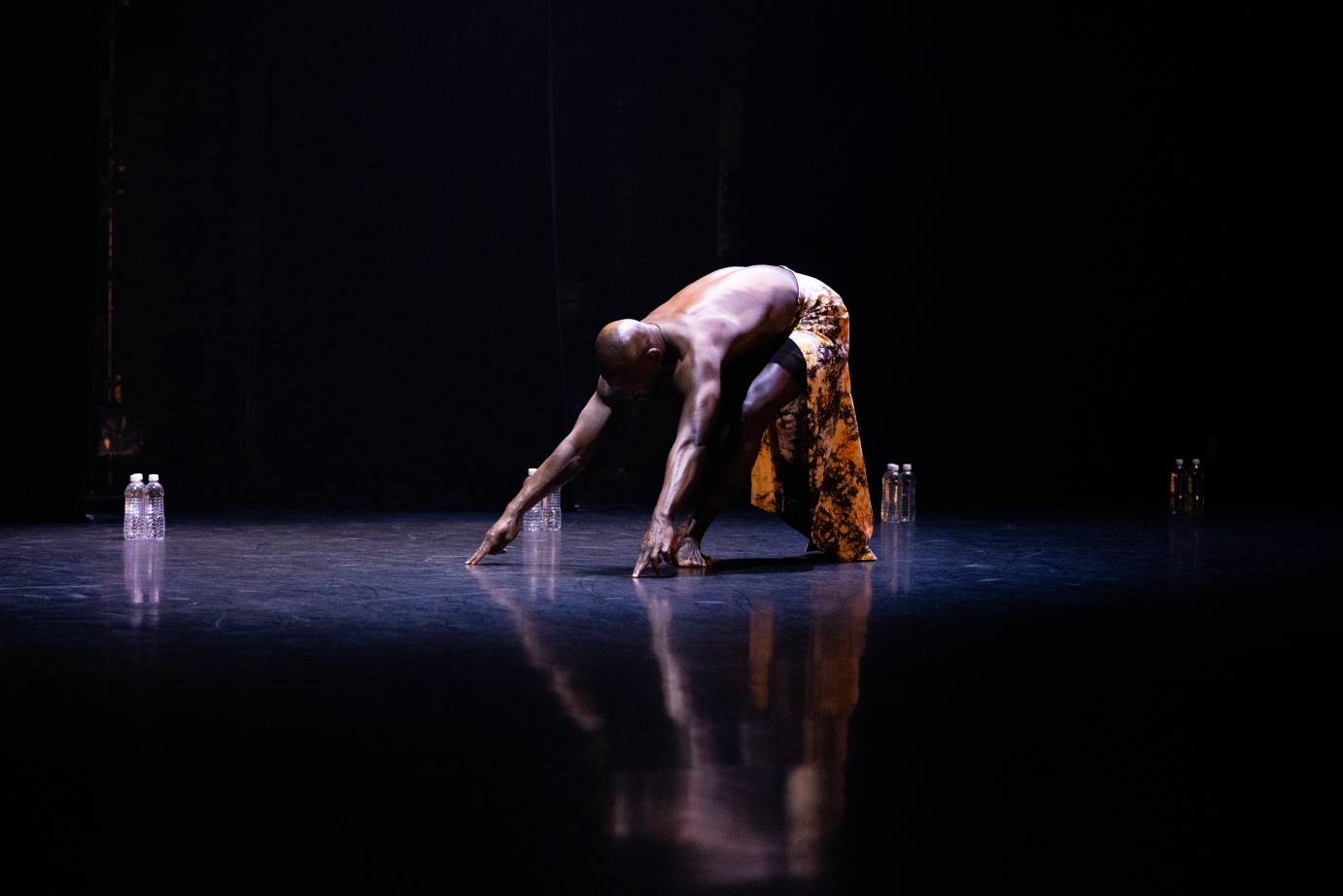
The growth and change inherent in the act of building are channeled through the water bottles: two by two he moves them from the perimeter to the open center of the space, precisely measuring singular placements and emergent geometries with the standard units of his feet, forearms, or shins. The sounds of progress — train whistles over the ever-present drums — interrupt the auditory field, echoing a new orientation to space and time. But progress is not without its dark side: the oppression, confinement, and grief Coulibaly wrenches from his jerking body to the wails of sirens in the shadows of cell bars. He is brought to his knees, yet something in him never surrenders. He returns to building with renewed purpose and a restless but clear desire; he claims his work with arms spread wide to reveal a fleeting, contented smile.
Through the challenges and rewards of progress, Coulibaly asserts a continual need for transformative awakening that draws on ancestral power to activate self-driven futures. In the final scenes of his ritual he opens a new body one gesture at a time, acknowledging the spirits of self, other, and the divine. He wheels from earth to sky with palpable pleasure to shake off rigid geometries, rediscovering rounded edges and darting syncopations along the way. A chorus of instruments and voices swell with him in a dynamic ebb and flow of movement and sound.
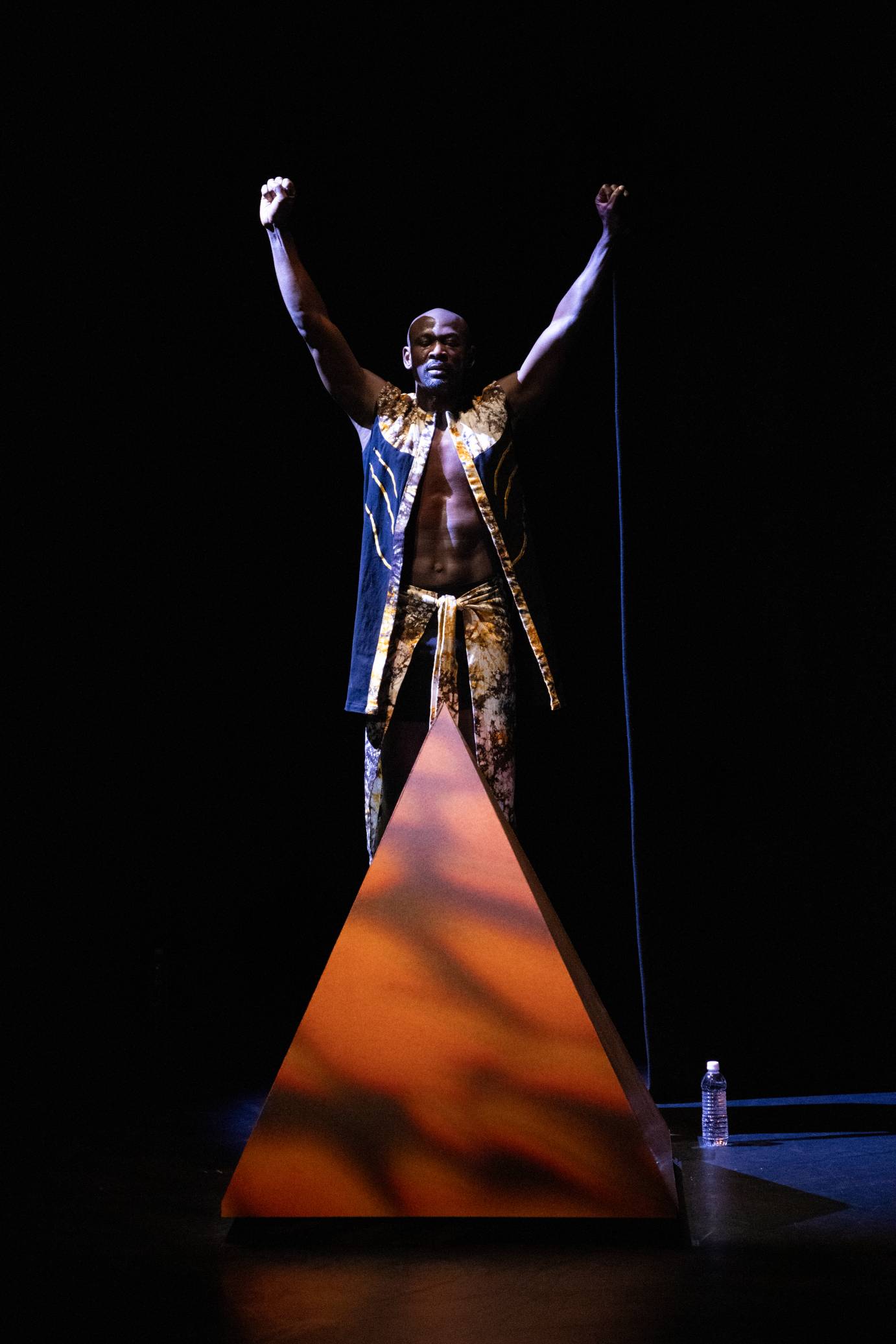
He pauses to retrieve a pair of pristine high top shoes (which have sat all the while under a pyramid structure on stage), donning them through playful bops and powerful strides. They give his feet new meaning, a swagger and urgency that find expression in the words he scrawls onto the stage: “SECURITY,” “LEADERSHIP,” “YOUTH.” These are the dreams, the pleas, the prayers with which he salutes his Africa three times in turn: a sharp hand at his temple, a fist raised high, arms crossed over his chest. Rising to stand atop the pyramid, he calls out the 1885 Berlin Conference—the summit of colonizing European nations that parceled out Africa into national properties—and smashes a small cake onto the floor: a final gesture of defiance.
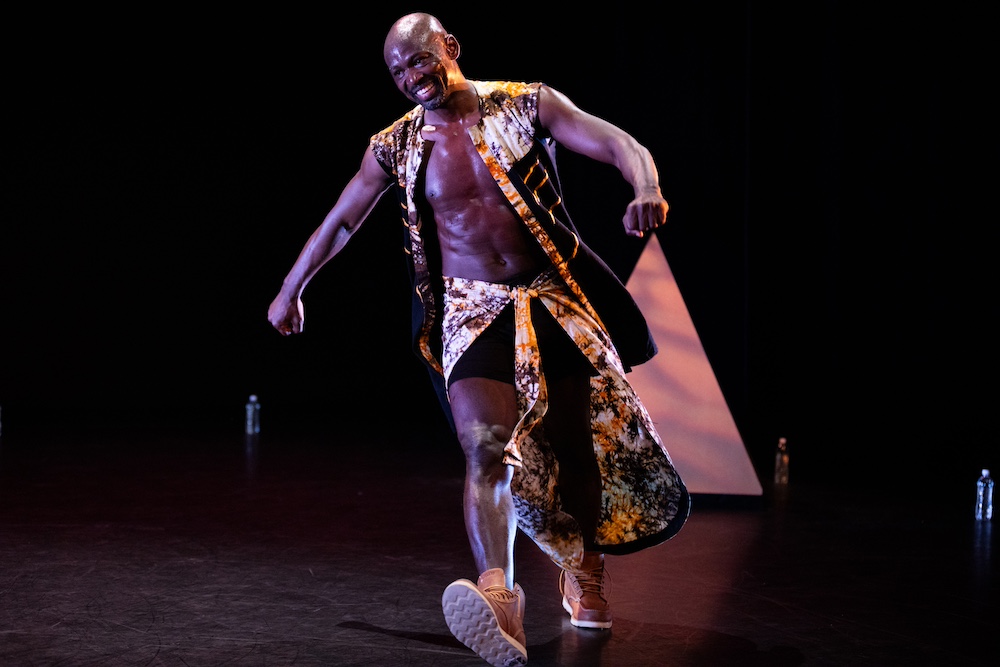
Coulibaly’s manifesto reaches far beyond the simple trajectory of antiquity/coloniality/modernity to express the fortifying power of selfhood as a channel of memory and an engine of reinvention. Africa cannot find and hold its place in the world without Africans to claim and embody its history and its future. The body is the archive, and with this dance Coulibaly places an urgent love letter in its files.














